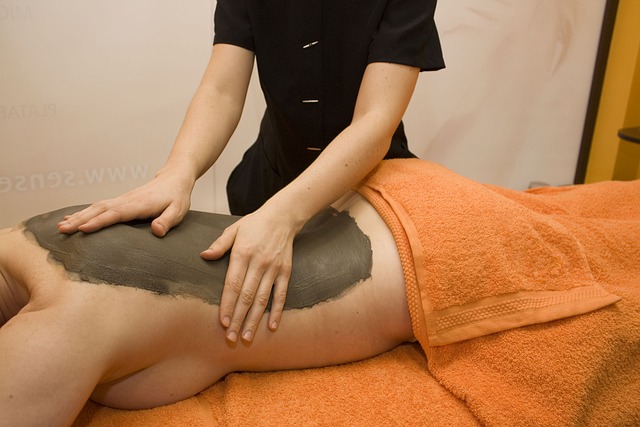Non-surgical body sculpting offers modern, safe alternatives to traditional fat reduction surgeries. Using advanced technologies like laser, ultrasound, and radiofrequency, these procedures target and reduce stubborn fat cells while stimulating collagen production for improved skin texture. With minimal recovery time and precise targeting, non-invasive techniques provide quick results without the risks and downtime associated with surgery. Consulting a specialist ensures the best approach is chosen based on individual needs and body type.
What is Non-Surgical Body Sculpting?

Non-Surgical Body Sculpting is a cutting-edge approach to body contouring that offers a safe and effective alternative to traditional surgical procedures. This innovative technique focuses on reducing excess fat in specific areas without the need for incisions or extensive recovery periods. By utilizing advanced technologies such as laser, ultrasound, or radiofrequency energy, Non-Surgical Body Sculpting targets deep layers of fat while simultaneously stimulating collagen production to improve skin texture and tone.
This modern method is particularly appealing to individuals seeking a non-invasive way to achieve their desired body shape without the risks and downtime associated with surgery. It allows for precise targeting of problem areas, providing noticeable results in less time compared to conventional methods. With minimal discomfort and little to no recovery, Non-Surgical Body Sculpting offers a convenient and effective solution for those aiming to sculpt and redefine their physique.
Understanding Targeted Fat Reduction Techniques

Understanding Targeted Fat Reduction Techniques
Non-surgical body sculpting has emerged as a popular and effective method for achieving a slimmer, more contoured figure. These techniques focus on reducing localized fat deposits without invasive procedures or downtime. By targeting specific areas like the abdomen, thighs, or buttocks, these methods offer a non-invasive alternative to traditional liposuction. Advanced technologies such as laser, ultrasound, and radiofrequency are employed to break down and eliminate fat cells, stimulating collagen production for improved skin tone.
Each technique has its unique advantages and may work better for certain individuals based on their body type and fat distribution. For instance, laser-based treatments excel at breaking down deep fat, while ultrasound is particularly effective for superficial fat layers. Consulting with a qualified specialist ensures the best approach is chosen, delivering optimal results with minimal discomfort or side effects.
Advantages of Non-Invasive Procedures Over Surgical Options

Non-surgical body sculpting procedures offer a range of advantages over traditional surgical options for fat reduction. One of the key benefits is their non-invasive nature, which means there’s no need for incisions or extensive recovery periods. This makes them an attractive choice for individuals seeking a quicker, more comfortable alternative to liposuction or other surgeries.
Additionally, non-invasive procedures are often less risky, as they don’t involve general anesthesia or the potential complications associated with surgery. They can target specific problem areas with precision, providing effective results without the downtime and scarring that surgical procedures may leave behind. This allows individuals to resume their normal activities faster and maintain their desired shape more easily over time.
Common Non-Surgical Fat Reduction Methods Explained

Non-surgical body sculpting has gained popularity as a safe and effective alternative to traditional fat reduction methods. Several techniques are now available, each with its own unique approach to eliminating stubborn fat deposits without surgery. One common method involves the use of cold therapy, such as cryolipolysis, which freezes targeted fat cells, causing them to break down and be naturally eliminated by the body over time. This non-invasive procedure is often used for reducing fat in problem areas like the abdomen, love handles, and thighs.
Another popular option is high-intensity focused electromagnetic energy (HIFEM), which uses gentle electrical impulses to stimulate muscle contraction, mimicking the effects of intense exercise. While primarily marketed for muscle toning, HIFEM has also shown promising results in reducing fat thickness. Laser-based technologies are another non-surgical fat reduction method that employs light energy to target and break down fat cells, leading to reduced fat volume and improved skin texture. Each of these approaches offers a minimally invasive way to achieve body contouring goals without the risks and recovery time associated with surgical procedures.
How Effective are These Treatments?

Non-surgical body sculpting treatments have gained significant popularity due to their non-invasive nature and promising results. These advanced technologies aim to reduce stubborn fat deposits without incisions or recovery time, offering an attractive alternative to traditional surgical procedures. The effectiveness of these treatments relies on the specific technology employed and individual patient factors.
Ultrasonic, laser, and electromagnetic fields are among the methods utilized, each with its unique mechanism to target and break down fat cells. Clinical studies have shown promising outcomes, demonstrating significant fat reduction in treated areas. However, it’s crucial to consider that results may vary based on body type, skin elasticity, and adherence to post-treatment instructions. Professional consultations are essential to determine the most suitable method for individual needs and ensure optimal, safe results.
Safety and Side Effects: What You Need to Know

When considering non-surgical body sculpting procedures like targeted non-invasive fat reduction, safety and side effects should be your primary concern. These treatments are designed to minimize risks associated with more invasive options, but as with any procedure, there can be potential complications. Common side effects may include temporary redness, swelling, or discomfort at the treatment site, which usually subside within a few days. More serious yet rare side effects could include skin discoloration, bruising, or fluid accumulation.
Before undergoing any fat reduction treatment, it’s crucial to consult with a qualified healthcare provider who can assess your individual needs and health history. They will be able to discuss the expected outcomes, potential risks, and provide guidance on managing any adverse reactions that may arise. Remember, transparency from your provider is key to ensuring you’re fully informed about what to expect during and after the procedure.
Choosing the Right Clinic and Professional for Your Procedure

Choosing the right clinic and professional for your non-surgical body sculpting procedure is paramount. Look for a facility with experienced, board-certified practitioners who specialize in targeted non-invasive fat reduction techniques. Reputable clinics should offer state-of-the-art equipment and a range of treatments to cater to individual needs.
Before making a decision, thoroughly research the clinic’s reputation, check patient reviews, and inquire about their safety measures and success rates. Ensure they provide comprehensive consultations to understand your unique body composition and goals. A good professional will take the time to answer your questions and address any concerns you may have about the procedure, fostering a collaborative environment for achieving optimal results.
Post-Treatment Care and Recovery Tips

Post-treatment care is crucial for optimal results after non-surgical body sculpting procedures. Patients should follow their practitioner’s specific recommendations, which may include resting, hydration, and avoiding strenuous activities for a few days. It is recommended to apply a cooling gel or ice pack to the treatment areas to reduce any temporary redness or swelling. Staying hydrated and maintaining a healthy diet can aid in enhancing the results.
Recovery is typically swift, allowing individuals to resume their normal routines within a short time. However, it’s essential to be mindful of any discomfort or unusual symptoms. If any concerns arise, such as severe pain, prolonged bruising, or signs of infection, patients should contact their healthcare provider promptly. Remember, each person’s recovery journey may vary, so following professional advice is key to a successful and safe experience.
